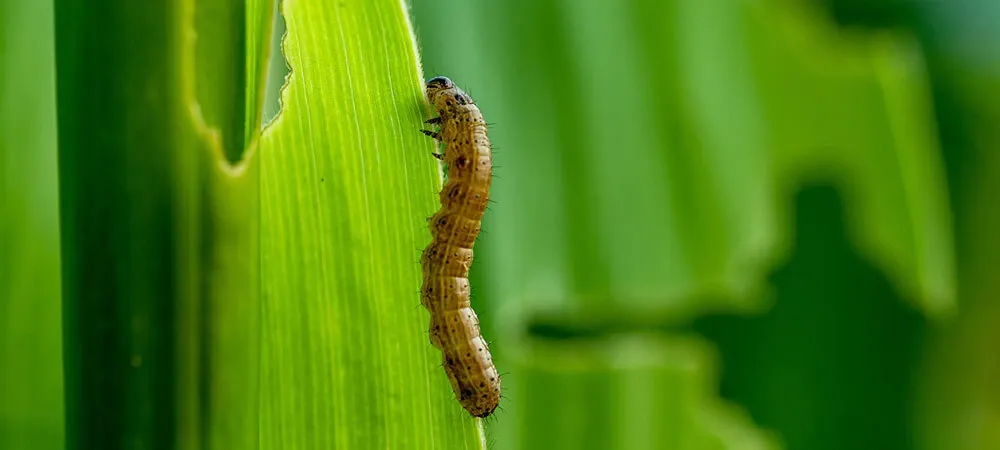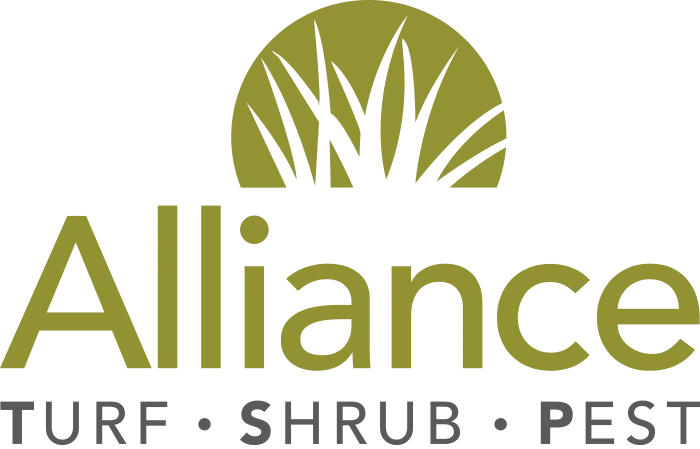Fall armyworm: Biology and Management in Georgia Turfgrass

The fall armyworm, Spodoptera frugiperda (J. E. Smith), is native to North America. Fall armyworm caterpillars are identified by an “inverted Y-shaped” marking on their head capsule. Fall armyworms are active year-round in tropical regions such as southern Florida (from Tampa to Miami), southern Texas, and northern Mexico. Each year, fall armyworm moths are carried from these regions to northern U.S. states, including Georgia, via storms and wind currents. They typically arrive in Georgia in spring or early summer, with caterpillars becoming noticeable in turfgrass by early July. The exact timing of their arrival varies annually depending on weather conditions. In some years, favorable weather brings more moths, leading to higher initial populations. Once in Georgia, fall armyworms can complete two to three generations, with populations increasing through summer and fall. Wet summers favor the survival of young caterpillars, while older caterpillars thrive in drier, hotter conditions. By late fall, Georgia’s freezing temperatures kill off the remaining population.
Lifecycle
Fall armyworm moths are nocturnal and lay eggs in batches of 50–200. These egg masses appear as cottony patches and are often laid on surfaces near lawns—flags, fences, sheds, exterior walls, trees, and patio furniture. Eggs hatch in 2–3 days. Newly hatched caterpillars group together briefly before dispersing via thin webs to nearby turfgrass. Feeding begins almost immediately, primarily at night. Caterpillars grow to about two inches in length by the fourth and fifth instars and become aggressive feeders, active both day and night. In summer, they mature in 2–3 weeks, drop to the soil, and pupate. After about a week, adult moths emerge to start the cycle again. In Georgia summers, each generation takes about four weeks from egg to moth. Their introduction from Florida and Texas makes them sporadic pests, with intensity and timing varying by location.
Damage
Damage is primarily caused by third- to fifth-stage caterpillars. Early stages are tiny and often go unnoticed. As caterpillars mature, green turfgrass browns, often resembling drought or disease damage. Moisture benefits younger stages, while dry conditions favor older ones. Infestations often follow storms, which facilitate moth dispersal. Caterpillars prefer unhealthy turfgrass. Good turf management—proper fertilization (especially phosphorus), regular mowing, and irrigation—can reduce susceptibility. After mild to moderate damage, turf may recover within 3–4 weeks with fertilization and watering. Severe infestations may require re-sodding if stolons are completely consumed.
Monitoring
From July to September, monitor for egg masses on nearby structures. No precise damage threshold exists; more eggs usually mean more caterpillars and more damage. Act quickly with insecticide band applications when numerous egg masses are present. Also inspect turf edges for signs of feeding. Pour soapy water over affected areas—late-stage caterpillars will emerge if present. Take immediate action to prevent further turf damage.
Management
Begin control early by checking for egg masses. Apply insecticides like Bacillus thuringiensis subsp. kurstaki or pyrethroids (bifenthrin, permethrin, deltamethrin) around structures. Support predator populations (ants, beetles, earwigs) by minimizing insecticide use. These predators are active at night and effective in Georgia’s heat. When populations spike in late summer or fall, stronger interventions may be necessary. Larger caterpillars respond best to chlorantraniliprole; tetraniliprole is another option for golf courses and athletic fields. Pyrethroids may be ineffective for late stages but can be paired with insect growth regulators (e.g., diflubenzuron, pyriproxyfen, azadirachtin) to improve control. Soapy water tests after treatment help assess effectiveness.
Grass Type Susceptibility
Bermudagrass is common in Georgia and highly susceptible to fall armyworms. The 'TifTuf' cultivar tolerates feeding better due to rapid regrowth. Zoysiagrass (e.g., Zeon, Emerald, Zenith) and centipedegrass are less affected. St. Augustinegrass is also vulnerable. New sod is more prone to damage—monitor frequently and treat promptly.
For insecticide recommendations, consult the Georgia Pest Management Handbook or your local County Extension Agent. Always read and follow label instructions—the label is the law.
